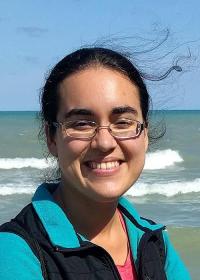Why did you choose biostatistics?
My interest in patterns and statistics led me to be a math major but I was also driven to help people, and I was involved in a lot of community service projects as an undergrad. While I valued the one-on-one connections I made with people, I thought that I could make a bigger impact if I approached problems on a broader scale. That’s when people started saying to me, “Public Health, that’s the term you need to look for.”
I attended several conferences such as Infinite Possibilities and the Society for Advancement of Chicanos/Hispanics and Native Americans in Science (SACNAS) which helped me to see biostatistics as the bridge between these two interests. At these conferences, I met many people from industry, government and academia and got see the breadth of choices available. Even as somebody who studies math, it made me realize that there are so many options out there apart from being a professor.
Why did you choose UW?
A variety of reasons. First, it’s a great program. No one is going to question the academic value of UW Biostats. Throughout the program, you’re going to work hard and learn a lot, and people in the department are going to be supportive of you along the way. And it helped that UW was on the West Coast so I could be in the same time zone as my family. It’s easy to catch flights home for the holidays.
How would you describe your experience as a UW Biostatistics student?
It’s an academic marathon. There are some highs, there are some lows. You’re always learning and there’s going to be a good team cheering you on. If you find that support network you’re good to go. You learn a lot of skills along the way and can then decide to use the ones you really like.
What kind of research are you conducting?
I work with Professor Robyn McClelland at the Collaborative Health Studies Coordinating Center (CHSCC). We are using data from the Multi-Ethnic Study of Atherosclerosis (MESA) to focus on diets that seem protective against cardiovascular disease. MESA tracks a lot of information related to 6,000 people across the U.S. from a variety of different ethnic and racial backgrounds.
My research focuses on trying to identify types of food patterns that are related to heart disease prevention. The statistics part is deciding what “best patterns” means for us and improving upon supervised methods, which have not been used in this area of nutritional science before.
What are your future goals?
I’m excited to be in a collaborative setting on an interdisciplinary team focusing on applied health projects, preferably, at a research center.
What advice would you give to a student who is considering the UW Biostatistics program?
First of all, think in depth about why you want to get this degree. See if you can visualize yourself succeeding and thriving in Seattle, because it’s going to be several years of your life. And if you think you can, get yourself ready and sign up because it is a great program to commit to once you’ve made that conscious decision.
What extracurricular activities do you enjoy?
I really enjoy the variety of Asian foods here. I also do Zumba dancing and go to the gym. I have an uncle involved with the Seattle International Film Festival so every now and again he takes me out to see a new international film.
What do you like most about living in Seattle?
Nature is important to me so the greenery and the scenery in a necessity. And I like the public transportation. More cities need this kind of transportation system.
Related story: Biostat student travels the globe as UW Bonderman Fellow
